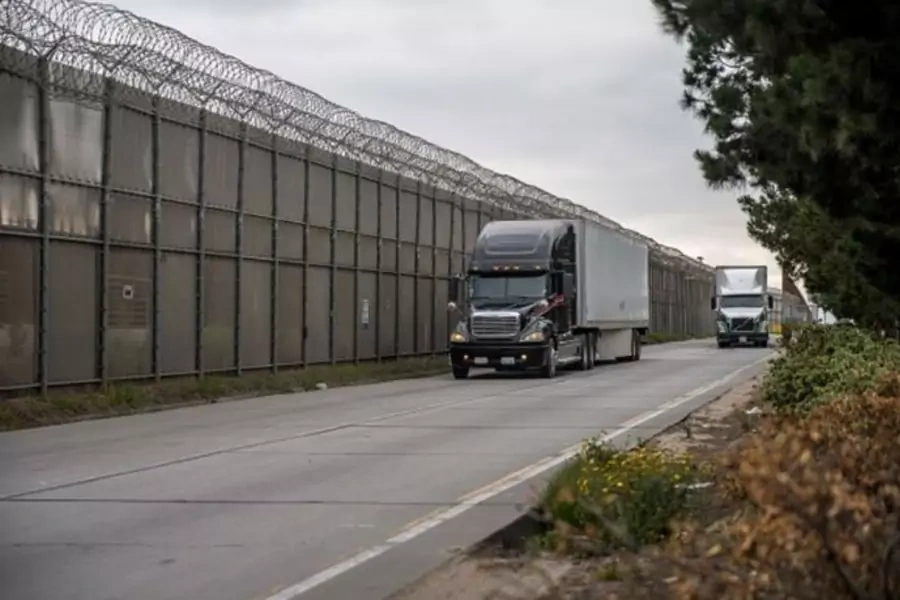Mexico’s Response to Tariffs Won’t Make Trump Happy

President Donald Trump overruled his advisers last week to announce tariffs on Mexico for not stopping migrants at the border. Facing the continuing fallout from Special Counsel Robert Mueller’s investigation and the prospect of 2020 elections, Trump seems to be betting again that hyping the border and demonizing trade and Mexico will rally his political base.
His latest tariff gambit abuses the International Emergency Economic Powers Act, undermines free trade agreements and taxes American consumers. But that isn’t why his threats won’t work. It is because President Andres Manuel Lopez Obrador of Mexico can’t staunch the flow of people from his neighbors to the south.
More on:
Mexico’s reaction to Trump’s threats so far has been muted. Lopez Obrador sent a conciliatory letter in response. While declaring that he “wasn’t a coward,” he’s been in I’m-a-lover-not-a-fighter mode, couching his criticisms in history lessons harkening back to Abraham Lincoln. His foreign minister, after hurrying to Washington, has since been tweeting platitudes about dignity and respect in the lead-up to Wednesday sessions with U.S. officials.
It isn’t just Trump who wants Lopez Obrador’s government to stop Central Americans. Mexicans themselves are increasingly unnerved and unhappy about the rising number of desperate migrants on their roads and in their communities. While they greeted the initial caravans with blankets and tacos, people’s patience and pocketbooks have worn thin. And the political opposition remains silent, still in disarray after last years’ electoral thumping.
But there is little that Lopez Obrador can do, especially in the short term. His government has already stepped up deportations to more than 50,000 so far this year, surpassing the 2018 April and May numbers of his hard-line predecessor. Yet the women, children and men keep coming.
Mexico’s immigration bureaucracies are utterly overwhelmed. Its National Migration Institute has never been known for its effectiveness or efficiency, and Lopez Obrador’s misguided budget cuts have exacerbated its failings. And the tiny Mexican Commission for Refugee Assistance, which handles asylum cases, was unable to process even a quarter of the 30,000 applications it received last year. This year, the number is set to double. Money promised by United Nations to open up a new office in Tijuana will help only on the margins.
Mexico could and should spend much more to deal with these human flows. But the United States—whose own interdiction rate was 75 percent in 2016, which meant nearly 200,000 successful illegal entries—is asking a nation with far fewer resources and much less capacity to shoulder a burden that the U.S. admits it can’t handle.
More on:
The U.S. government is pushing Mexico to sign onto a safe third party agreement in exchange for continuing free trade (something the previous Enrique Pena Nieto administration refused). This would designate Mexico a safe place for migrants, even though it is patently not. It would also free the United States from any Central American asylum claims along its southern border by forcing Mexico to deal on its own with the hundreds of thousands of refugees. Which it obviously can’t.
The ensuing humanitarian crisis would likely send Mexico’s economy, which already shrank in the first quarter of 2019, into recession if not a full-blown crisis. If that happens, more migrants will head to the U.S., as Mexicans join Central America’s sojourners.
A saner U.S. government would help rather than punish Mexico for a crisis to its south. It would double down on aid to process and protect migrants, not force a desperate Mexico to turn to the UN for money. And it would offer carrots along with sticks. Europe provided Niger with more than $1 billion to stop Libyans trekking across its territory. Washington could respond with similar support.
A strategic U.S. administration would focus on the reasons Central Americans leave in the first place. This would mean not backing corrupt politicians such as Honduran President Juan Orlando Hernandez, who has been investigated by the U.S. Drug Enforcement Agency for drug trafficking. It would mean not torpedoing a highly effective UN-sponsored corruption and crime fighting body in Central America. And it would require expanding Central American aid for programs that take on violence, poverty and the lack of economic opportunity. The Trump administration is doing the opposite.
Mexico is hoping this will blow over. Lopez Obrador’s administration weathered Trump’s April threats to close the border through discussions and enforcement promises. If Trump persists, Mexico can respond too, starting with retaliatory tariffs on U.S. goods headed south. Mexico has done so before, during a trucking conflict and in response to steel and aluminum tariffs. It could impose nearly $20 billion in levies from the get go, raising them each month in tandem with U.S. levels.
This retaliation would highlight the gap between Trump’s anti-Mexican rhetoric and the underlying interdependence of the U.S. and Mexico, with stark consequences for 2020. Many of the biggest exporters to Mexico—Arizona, Michigan, Illinois—are already swing states. New tariffs could throw Texas into recession and put its 38 electoral college votes into play. Trade may indeed decide the next election. But if Trump continues down the same path, not in the way he hopes.
 Online Store
Online Store